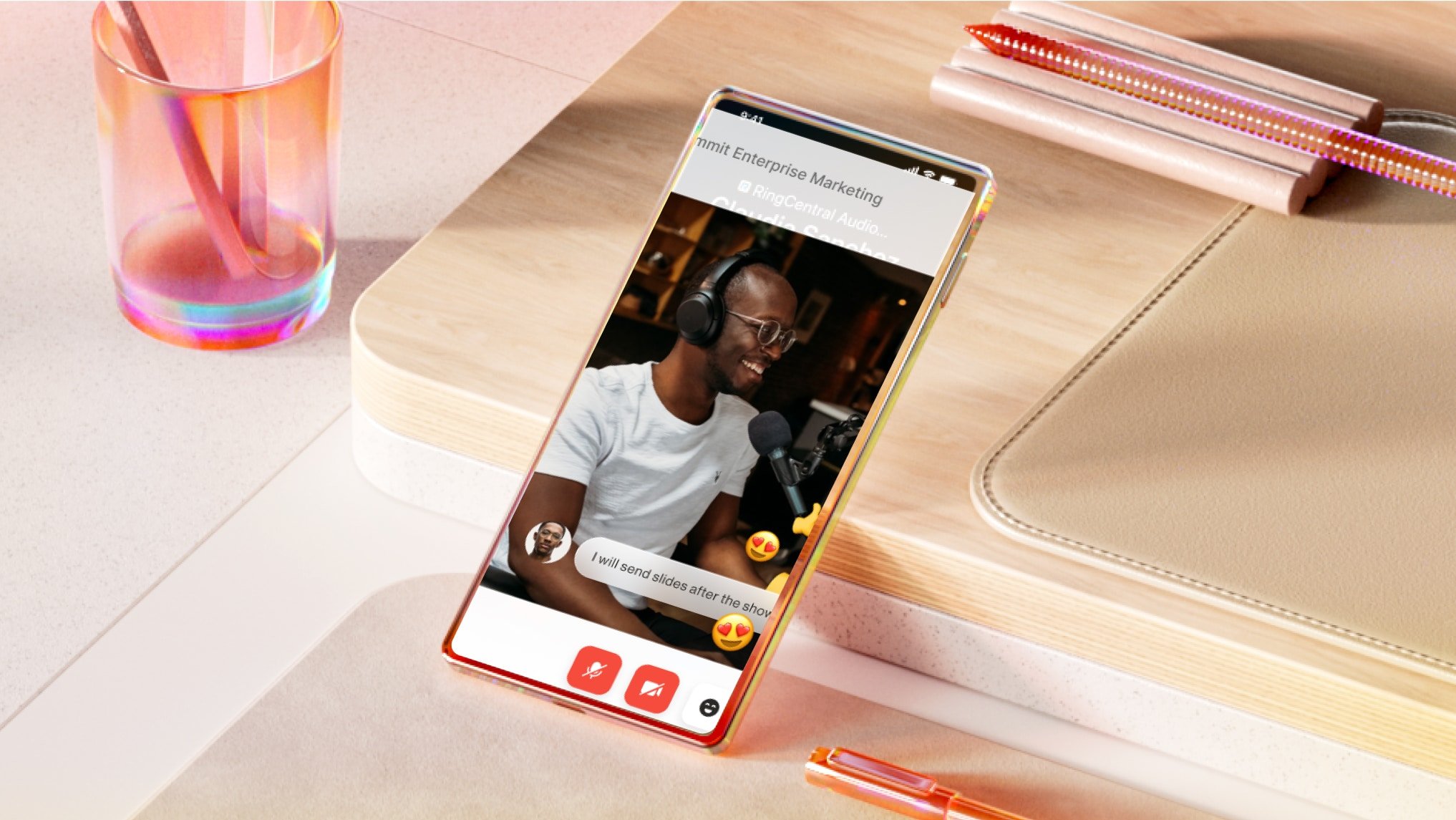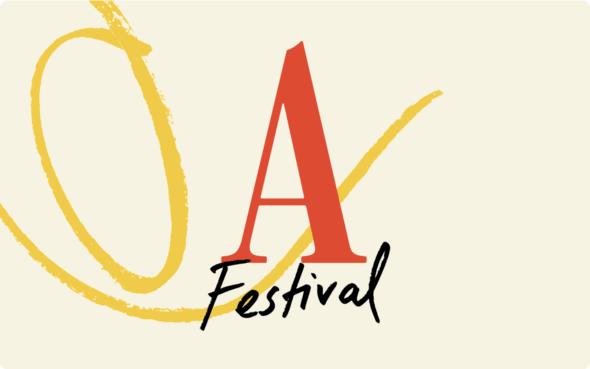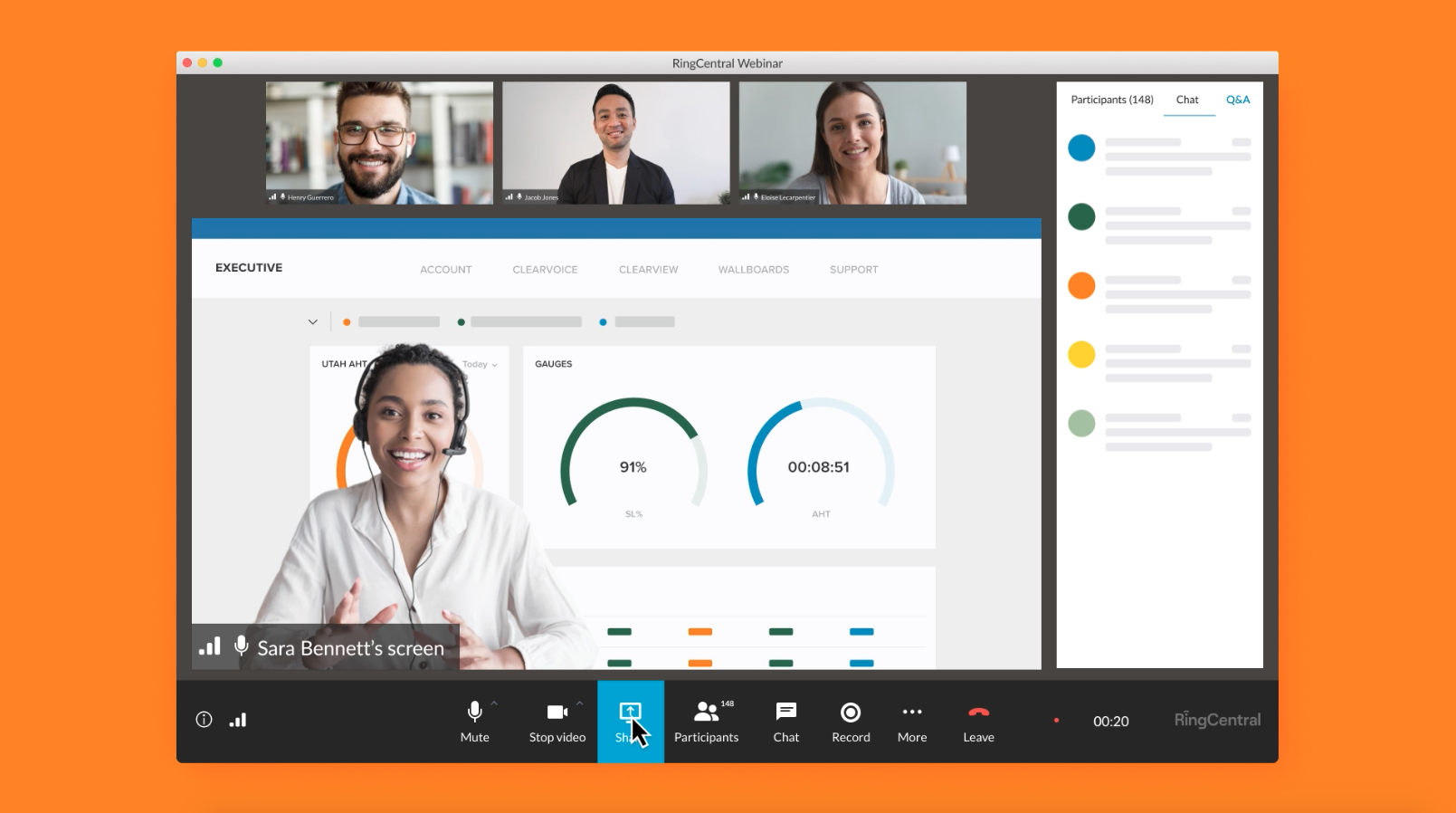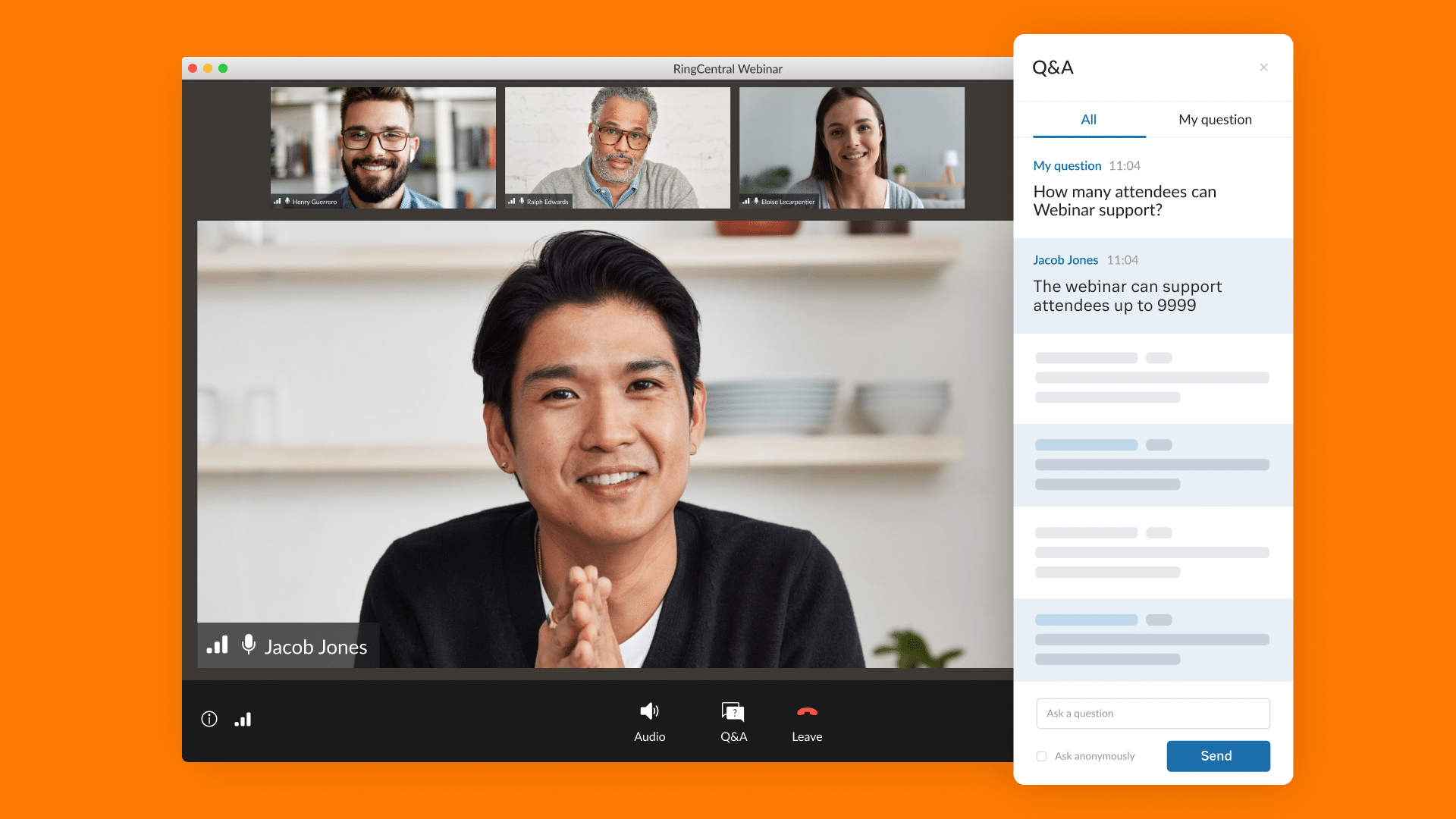Hopin is now RingCentral Events
You’ve poured your heart and soul (not to mention, your time) into planning a shared experience that will be valuable and inspiring for your attendees. You’re almost ready to kick off your event promotion when those familiar questions start to pop up:
- How will I attract my target audience to this event and get them to register?
- How do I get people to show up for the live experience?
- What kind of ticket pricing strategy will actually help me reach those ambitious registration and revenue goals?
While there might not be a single silver-bullet response to these age-old questions, there are four proven strategies that can help pave the way for you to achieve your registration and ticket sales goals.
Let’s uncover a few key things you can do to level up your event promotion skills –– and help you sell more tickets to your next shared experience:
1. Understand how ticket pricing affects the perceived value of your event
Why are people willing to pay more for brand-name goods like cereal, handbags, and over-the-counter medicine? Why don’t we feel compelled to go with the cheaper generic version that seems to have very similar stuff inside? Because price and perceived value are closely connected. In many instances, items with higher price tags tend to be perceived as more valuable than comparable lower-priced items.
The same dynamic holds true for events: Your audience often sizes up the relative value of the experience you’re offering based on the event’s ticket prices. Let’s bring this concept to life with some examples:
Understand the consequences of “free”
Many organizers choose to hold online experiences at no cost to attendees to expand their reach and eliminate any cost barriers to attending their events. While there’s nothing wrong with this approach, free tickets can also lead to more no-shows.
When registrants pay a fee of any kind, in advance, studies show it increases the likelihood they’ll attend the event. So how do you strike a balance across maximizing attendance, driving registrations, and generating ticket revenue?
Up the ante on free or low-cost options
It’s understandable to feel hesitant about charging for an entire event. After all, you’ve seen the results of having a low barrier to entry.
If you’re still looking to focus on this approach, try easing into paid ticket types by experimenting with a “freemium” pricing model. In this scenario, you’d employ both free and paid ticket types for your event. That way, people can register for free (meaning more folks for future event marketing) and free registrants will have access to everything included in your general admission experience.
But then you’ll also be able to charge for a premium ticket type, featuring add-on experiences at an additional cost (meaning more potential revenue). These experiences could be things like the chance to join an exclusive breakout room with a celebrity speaker, premium event swag, access to VIP-only areas, special, early access to a new product, and the like.
Offer exclusivity through scarcity
Let’s call a spade a spade: We all love to feel special. Getting the VIP treatment is desirable no matter what type of experience is on the menu.
Consolidating your premium ticket types into one complete VIP experience package can increase the perceived value of your event. The reason? You’ll only offer a select number of VIP tickets, which creates a sense of scarcity for interested registrants. With a limited number of these tickets on the table, people are often willing to pay more to make sure they get that top-of-the-line experience before someone else scoops it up.
Backstage passes, anyone?
Capitalize on your event’s brand equity
If you’ve built a strong event brand and a following of loyal attendees, you can further increase the perceived value of your flagship experiences by employing a paid ticketing structure. This can include charging a nominal registration fee for general admission, along with premium and VIP ticket types to show potential registrants they’re in for an experience filled with valuable content, connections, and community.
By leveraging a paid ticket type, you’re not only increasing the perceived value of your entire event, but also helping offset the cost of producing the experience.
The added bonus? When the perceived value of your event goes up and people start purchasing paid tickets, that no-show rate declines dramatically and overall registrations for your shared experience increase.
2. Evaluate the attractiveness of your event from the attendees’ perspective
Why does anyone buy anything? Apart from the occasional impulse buy, or satisfying a come-hell-or-high-water-type craving for a sweet treat, people pay for solutions to their problems or pain points. It can be something small, like a pain reliever for a headache, or a larger investment, like a car to help get you places when other modes of transport aren’t readily available.
We make purchase decisions the same way when it comes to events. For example:
Align your experience with attendees’ desires
To accomplish this alignment, ask yourself (or better yet, ask a prior event participant):
- What pain points can the event experience address?
- Are your attendees hungry for innovation?
- Are they eager to learn about a specific topic that’s important to them?
- Is there a thought leader or performer they’d love to hear from or even meet?
From there, make sure to highlight the strong alignment between your event and the needs it will address. You can do this on your event website and registration page to boost ticket sales.
Understand how your event solves a key need
People will pay for experiences that help them overcome challenges, speak to their motivations, and satisfy their desires. You can get a sense of what matters most to your audience through conversations with past attendees, researching hot topics for potential attendees via tactics like social listening, sending out surveys to your target audience, and the like.
Next, capitalize on your in-depth understanding by offering different event elements and experiences priced relative to how much your audience deems them worth purchasing. And don’t forget to make capitalizing on your audience’s interests a quick win for everyone involved.
Use technology to optimize the registration experience
Having a quick and easy registration system is key to attracting customers and getting them excited to attend on the day of a live event. So, make the process of signing up a seamless experience.
This is where choosing the right event management platform –– with a full suite of event marketing capabilities –– can make the difference.
For example, RingCentral Events customers have access to our recently released Quick Registration functionality that’s built with the attendee experience in mind. Audience members can register for an event in minutes and the number of clicks it typically takes to sign up for an event are cut in half. The best part? Your attendees only have to enter their name and email address to register. And by streamlining and simplifying the registration process, you can increase your conversion rate by 50% — and set yourself up to gain more potential registrations as a result.
The right event technology can help position you on a path toward sustained and repeatable success as you seek to transform audience interest into day-of event attendance. And keep track of what works best each time to optimize future events accordingly. That way you can replace and/or phase out any any price points, offers, or promotions that aren’t performing well.
It might take several events to strike the perfect balance, so adopt a growth mindset. Document your learnings, and keep your eyes and ears open for feedback at all times.
3. Incentivize ticket sales with event promotions and special offers
From tried-and-true approaches, like early bird ticketing, to exclusive discounts and referral programs, the best way to maximize registrations and attendance is by creating a blend of special offers. Meet your audiences where they are and cater to what they find relevant.
So, don’t cast one wide net. Try multiple event marketing tactics to attract and reel in attendees. Aim for a multi-channel approach with persona-specific messaging.
Wondering what this looks like in practice? One example is posting organic and paid content on channels where your audience spends the most time. Tailor copy and visuals so they are highly relevant, stand out in crowded digital spaces, and resonate with people who could be part of the attendee persona you have in mind.
Looking for more ways to incentivize your audience to join your next shared experience? Consider using these tried-and-true event promotion tactics:
Reward loyalty
Start with past events’ attendees, customers, and others who actively engage with your organization. Reward their loyalty by giving them the first chance to get the best prices.
Think of this group as the prequel to early birds. They’ll know your event is coming up before the general public. Being among the first to register could mean getting the lowest ticket price and other potential perks.
Since you likely already have some information about this audience, personalize their promotions –– include their name in an individual promotional code or display a custom greeting on your event website.
Tap into time
The early bird gets the worm –– or so the saying goes. Early bird ticket pricing is pretty straightforward: This is a period of time when your current or recent attendees can sign up before prices go up. Don’t overcomplicate this one. You’ll have plenty of opportunities to test out exclusive offers as part of your overall event marketing plan.
Ever taken advantage of a 24-hour-only sale to score a discount on your favorite [insert any item you love here]? Use the same logic to take time-bound promotions a step further. For limited-time offers, choose a set number of days when tickets are cheaper than regular admission.
Create a sense of FOMO and prompt your audience to purchase now. You can give this type of promotion a boost by including a countdown on the registration page and spelling out how many days, hours, or minutes are left to take advantage of the discounted price.
Entice people with exclusive offers
Exclusive registration-driven offers can produce a sense of intrigue among your target audience. One idea? Generate several promotional codes that unlock discounts to your event. You can then feed the codes out to segments of your audience in ways that build anticipation. For example, you can serve people a lottery-like digital graphic and encourage them to “scratch off” a section of the graphic to reveal a discount code.
Take this idea a step further by creating a physical scratch card, or similar personalized print offer sent as direct mail to select attendees. Receiving something other than bills in the mail can be a welcome surprise-and-delight moment. The best part? Mailing out physical event promotions can drastically increase response rate.
Exclusive offers don’t always have to be discounts. They also work well in the form of free add-ons or access to parts of the event that general admission doesn’t include.
Energize your evangelists
People who are excited about your event will naturally spread the word — so, reward them for it. Exclusive promotional offers, like the ones described above, can be extended to influencers and evangelists who refer attendees. You can also offer a perk for the newly referred registrants.
Remember: Personalization helps increase engagement, so consider taking the time to generate custom codes. Look for event platforms with built-in referral codes for registrations, so you can identify and reward your top evangelists and referral generators.
4. Channel your inner ninja and check out what the competition is up to
How can you outsmart the competition if you’re in the dark on their activities? It’s helpful to know what your competition is doing so you can learn from them, while aiming to stand out in the crowd.
Research the competition but avoid the trap of becoming them
Conducting a bit of competitive research pays off and can be a good way to get a feel for the market: How does their pricing compare to yours? Does their event offer the same value, or is yours above and beyond? Are their events well attended? Which influencers do they align with?
But stop short of implementing the exact same ticket pricing strategy as another event. Why? Being a copycat can dilute the perception of your event –– and, in turn, your organization.
Don’t undersell yourself. You can always lower prices later through discounts and other promotional offers. Similarly, avoid the pitfall of charging too much for your shared experience and driving potential registrants away as a result.
Get your team in on the action
Pull your team together to conduct competitive research –– online and offline –– on similar events. Ask them to approach the process based on what a potential attendee would see and value.
Capture team members’ reactions –– what they found cool or kind of “meh” for competitor events. Then, infuse this newfound competitor registration and ticketing knowledge into your approach.
While it isn’t wise to play a game of “follow the leader” when it comes to ticketing and registration strategies (or anything else, really), your competition can provide a helpful gauge on your audience and market.
Learning from others’ successes and mistakes can help save you time, money, and resources –– it can also help you reach your goals.
Take a test-and-learn approach –– and seek out best practices
Ready to test drive these strategies? Don’t hesitate to mix and match, or even experiment with a combination of all of them.
The goal is to highlight the value of your event and get people excited for the experience you’re offering.
You know your event and your audiences best. So, lean into ticketing and registration strategies that align with your brand and what your audience values. As always, track activity so you know what works and what doesn’t. By optimizing your approach, you’ll come to understand what works best for your business –– then you can scale up from there.
Interested in finding out how RingCentral Events can help you acquire registrations and maximize event attendance to achieve your goals? Check out our event marketing capabilities or contact our team of event experts to learn more today.
Originally published Sep 01, 2022, updated Oct 14, 2024





